What to do if you meet a mountain lion on the trail: our safety guide
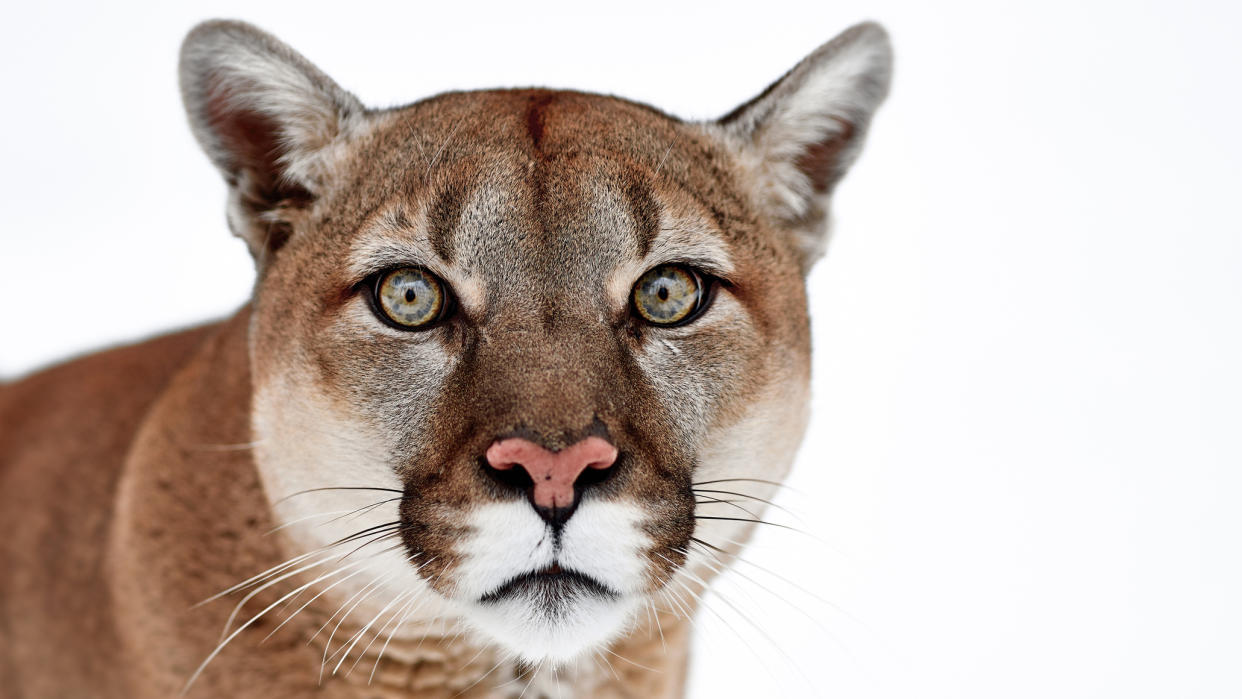
Big cats can be elusive creatures, from the rarely seen snow leopards of the Himalayas to the mountain lions that roam the American backcountry. You might never have seen a mountain lion out on your favorite trails, but if you regularly run or walk in the wilds of the American West, there is a good chance they’re out there every day, watching you.
There are an estimated 20,000 to 40,000 mountain lions – also known as cougars, pumas, panthers, and catamounts – living in the American West, and sightings and encounters have become increasingly common on trails adjacent to growing cities like Denver, Salt Lake City, Bend, Oregon, and Reno, Nevada. The cats’ habitat extends elsewhere too, right across much of North America, from Mexico to Canada.
Fortunately, attacks on humans are very rare, but it’s entirely possible you may meet a mountain lion when walking the trail in your hiking boots or venturing out for a long run. If you do, knowing what to do if you meet a mountain lion can go a way to helping prevent a memorable encounter becoming a mauling.
Meet the expert
Today's best deals
1. Be mindful
Don't wear headphones and listen to your surroundings when exploring
Avoid going out alone and don't let your dog off the leash
Stay on the trails and don't let small children wander off
If you’re hiking, trail running or backpacking in a known mountain-lion habitat, you should be fully focused on your surroundings at all times – don’t wear headphones or ear pods to listen to music, keep all your senses alert. You should be especially careful in the twilight of the morning and evening when cats are typically out hunting. It’s better to walk or run outside of these times if possible.
Avoid going out on such trails alone, and don’t take your dog with you. (If you must take a dog, don’t let it off leash because a mountain lion will likely consider it prey and attack or chase it.) Keep small children nearby and don’t let them veer off trail.
2. Back up slowly
If you see a mountain lion, back away slowly, keep it within your vision
Never run, as it may trigger the mountain lion's predatory instincts
From the moment you see a mountain lion or kittens, you should start backing away slowly. Always face the lion without turning your back or even your head at any time. Stay calm and avoid making any sudden movements that would startle the cat. Never run away from a lion because that might stimulate the cat’s instinct to chase and attack. Let the lion think you are afraid of it (because you are!) and that it is in charge of the situation. Mountain lions will typically escort human intruders away from their young, their food cache or their den.
3. Make yourself appear big
While backing away, make yourself look as big as possible by waving your arms overhead
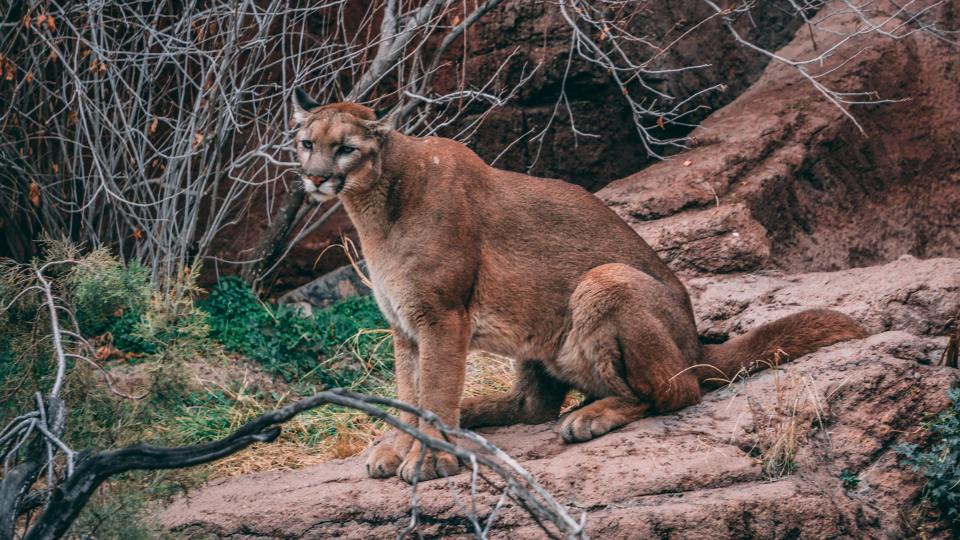
Stand upright and make yourself as tall as possible, while backing up slowly, to make sure the cat realizes you’re bigger than it is. Raise your arms over your head, wave them from side to side to continually portray your maximum height. If you are wearing a jacket, remove it slowly and twirl it in your hands as high above your head as possible. If you are with small children, do your best to pick them up so they won’t panic or run, or put them close behind you. Avoid crouching over or squatting so the cat won’t confuse you as a four-legged creature it might consider prey.
4. Be as loud as possible
Make plenty of noise to keep the mountain lion distracted
Don't make crying or whimpering noises as the mountain lion may judge you to be prey
Do whatever you can to make noise to keep the mountain lion distracted and wary, but avoid whimpering or crying so you don’t sound like a defenseless or wounded animal. Say or shout anything that comes into your head. Yell profanities if it makes you feel better. Singing a song fiercely or talking slowly and loudly can disrupt and discourage the lion’s hunting instincts, while shouting and screaming loudly will help keep it slightly distracted, concerned and defensive. You can also slap your water bottle, bang a trekking pole against rocks or clap your hands in a staccato rhythm.
5. Maintain eye contact
Maintain eye contact at all times to convey a strong demeanor
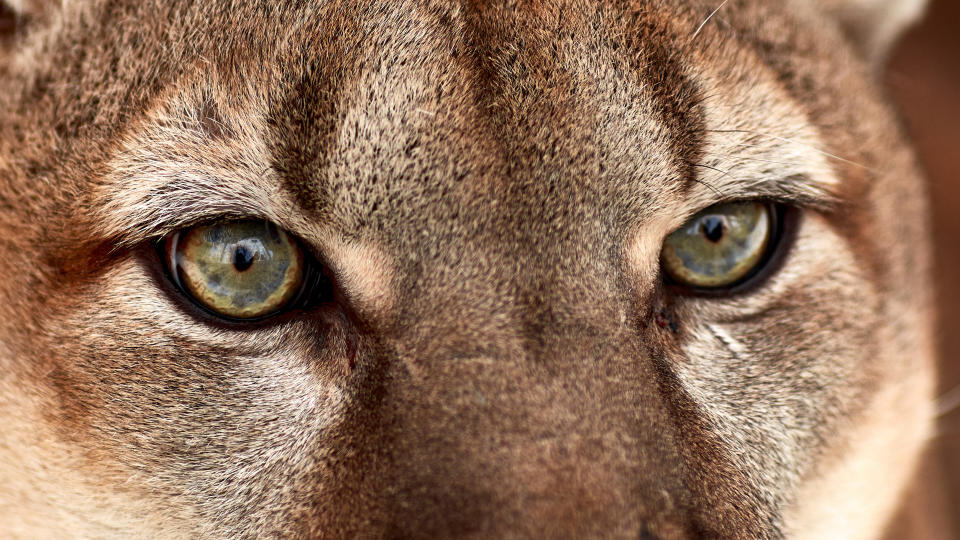
Never take your eyes off a mountain lion. Always look directly at the animal to portray a strong, defiant demeanor, while keeping the animal engaged and defensive. This is the opposite to what you should do if you meet a bear.
Turning your head can signal that you’re fleeing and put you in greater danger because a mountain lion can lunge in a split second. By keeping your eye on the lion, you’ll be able to get a better sense of its demeanor and its next action the moment it happens. If a mountain lion turns its back on you and walks away, it usually means the threat has been minimized. Keep your eye on it as you back away until it goes completely out of sight (and then retreat in the other direction).
6. Throw something
While throwing something at a mountain lion could further anger it, it's a better last resort than a proper physical confrontation
Avoid bending down to pick anything up – keep making yourself look big
This is getting close to a last resort, as throwing a rock or a small broken branch at a mountain lion could scare it away, but it could anger it, too. It’s a delicate situation, but you want to avoid a physical confrontation with an animal at all costs. Avoid bending down to pick up a rock, because the cat might think you’re crouching into an attack position, or you may suddenly look like prey.
If you throw something at the mountain lion, do it with purpose and aim for the area right in front of its feet to startle it. If you hit the lion in the face, it could make it panic and lunge toward you. If the mountain lion does lunge toward you, then change your tactic to throwing something directly at its face.
7. Fight back
If you are attacked, fight back with all your might
Protect your eyes, throat and neck as best as you can
Don't try to run away or play dead
Mountain lion attacks are rare, but they do happen. Humans don’t look, smell or sound like a lion’s typical animal prey, so mountain lion attacks on people are almost always defensive in nature. But even if the mountain lion doesn’t intend to eat you – like it would a rodent or deer – if you are attacked, you must fight back with all of your strength and faculties.
Protect your neck, throat and eyes as best possible. Try to kick it, hit it with a rock, smack it with a walking stick, swat it with a daypack, poke it in the eye with a stick or grab it by the throat with your bare hands. If you have bear spray, aim it directly toward its face and spray it. Don’t run away during an attack and don’t try to fool it by playing dead because it will likely continue attacking you.
Sharing trails with apex predators
Hikers and runners probably come close to mountain lions often without realising
Mountain lions are stealthy creatures that try to stay hidden
Think a mountain lion has never watched you pass by as you’ve gone trail running or hiking or backpacking? Think again, says John Griffith, a Naturalist with Humboldt Redwoods State Park near Weott, California.
“Mountain lions are around you all the time on the trails, but you just don’t know it because they don’t like people and you don’t want you to see them,” Griffith says. “They’re stealth creatures and they try to stay hidden.”
But, as Griffith says, the mountain lions are definitely out there, and all across the western portions of the United States and Canada, as well as throughout Mexico and Central America. They’re often hiding just off the trail, looking for prey (other animals, not humans!), protecting a recent kill cache, caring for their young or sleeping.
The California Department of Fish and Wildlife estimates there are 4,000 to 6,000 mountain lions in California, which has a population of 40 million people, but there have been fewer than 20 verified attacks on humans and only two fatalities since 1986. Similarly, the Colorado Parks and Wildlife have reported fewer than 20 human attacks over the past 30 years and only two fatalities during that span.
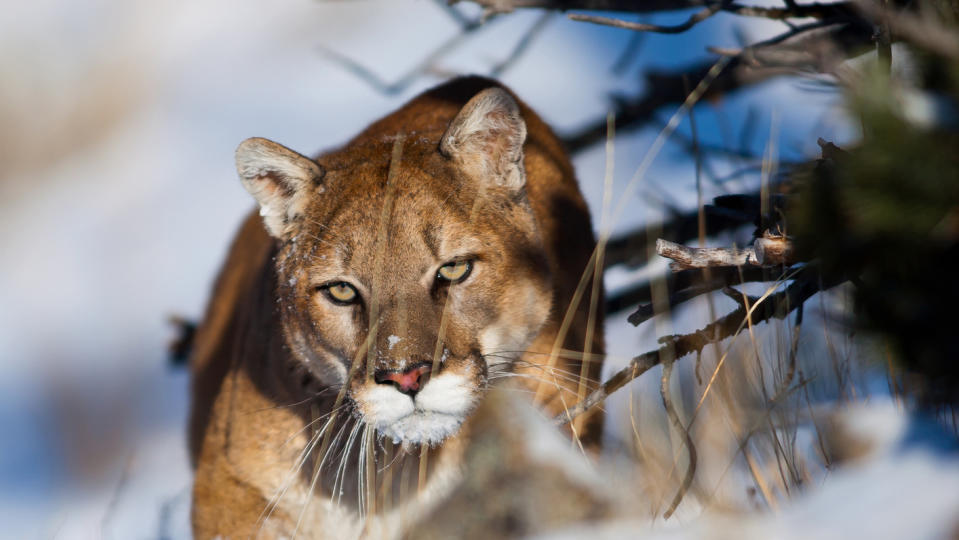
Most encounters occur when humans startle mountain lions in their natural environment
Runner Kyle Burgess filmed an encounter in 2020 and posted it to his YouTube account
Most of the sightings and interactions with humans occur when hikers, trail runners or mountain bikers startle mountain lions in their natural environment, forcing the cats to become defensive, Griffith said.
That’s exactly what happened on 10 October 2020 on a trail on the outskirts of Provo, Utah, when Kyle Burgess came a little too close for comfort with a mother lion protecting her kittens on a remote trail. The 26-year-old trail runner eventually scared the cat away and survived the incident unharmed, but it took six minutes of carefully backtracking his footsteps as the cat defensively followed him and occasionally lunged toward him, all in an effort to put distance between her kittens who were hidden in the brush.
Burgess nervously filmed the entire episode on his phone and posted it to his YouTube account, sparking an enormous response from the millions of people who watched it and realized the magnitude of the scenario.
“Kyle Burgess did almost everything right,” Griffith said. “He was loud. He kept eye contact. He was backing up. He did a really good job. The only thing he did wrong was that he should have had a partner going into that kind of place for a trail run.
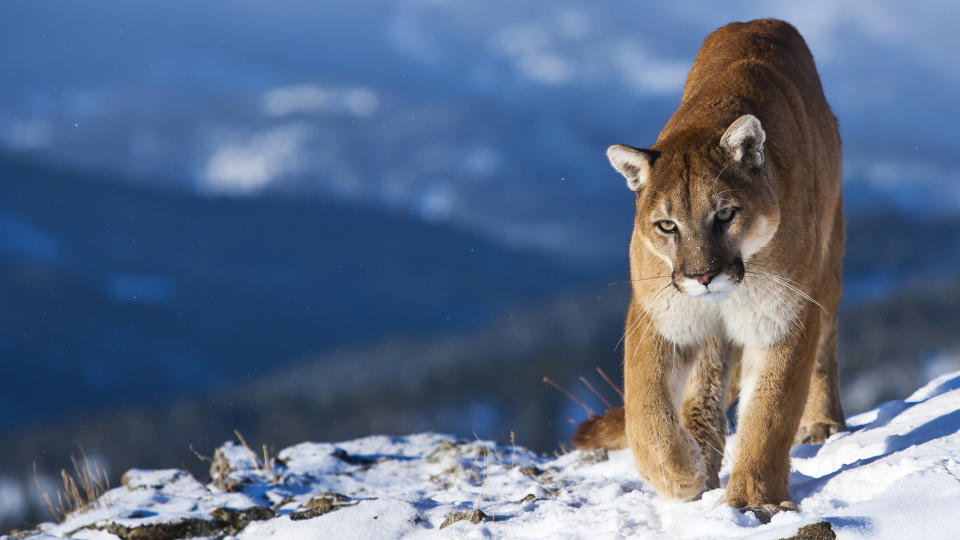
Always try to hit the trails with at least one other person
“Try to always go out on the trails with a partner, and if you have a partner and encounter a lion, separating a little will make the mountain lion more nervous and also give one of you the chance to pick up a rock without being lunged at.
“You don’t want to spend a lot of time looking small or crouching over, because that’s when a mountain lion will attack you,” Griffith says. “You don’t want to get bit by a mountain lion, but you don’t have to get bit. You just have to be aware. You have to know what to do.”
If you haven’t seen the video by now, it’s definitely worth watching, but you’re bound to wind up with sweaty palms and a terrifying sense of nervousness pulsing through your body.
For more information about mountain lions, visit Mountain Lion Foundation or Cougar Conservancy.
Tips from several outdoor agencies and organizations contributed to this report, including the National Park Service, Grand Canyon National Park, Colorado Parks and Wildlife, California Department of Fish and Wildlife, Oregon Department of Fish and Wildlife and MountainLion.org.
